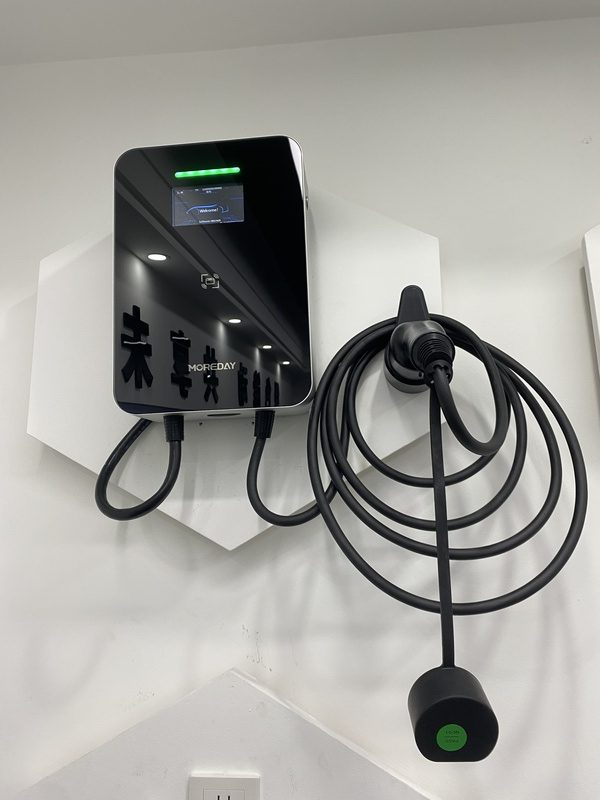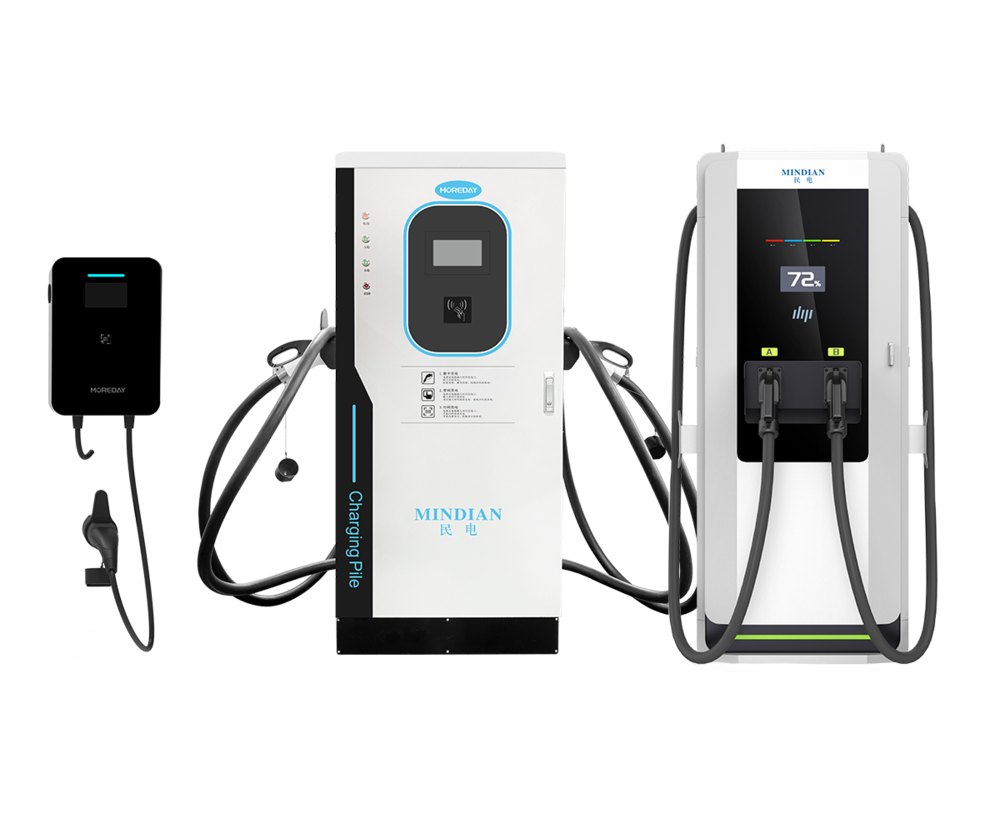When many EV owners consider purchasing an EV, they also think about how to choose a suitable EV charger for their electric car.
In this blog post, we’ll explore the differences between Level 1, Level 2, and Level 3 EV chargers, allowing us to make informed decisions about charging our electric vehicles efficiently.
What is a Level 1 Charger?

Level 1 chargers are typically used for charging at home. It has a typical charging power of between 1.4 kW and 2.4 kW and is equipped with a standard 120-volt power socket.
Charging is done through a standard 120-volt household power socket, making it easy to use and requiring no additional investment or installation.
Advantages of Level 1 Charging
Versatility: Level 1 chargers can connect to standard household outlets, allowing EV owners to charge their vehicles anywhere there is an available power outlet.
Cost-effective: Level 1 chargers are generally more affordable than higher-level charging options. They require no special installation or electrical upgrades.
Easy to install: Setting up a Level 1 charger is relatively simple and requires minimal technical expertise. Without complicated wiring or additional equipment, EV owners can easily install these chargers at home without the need for professional help.
Disadvantages of Level 1 Chargers
Slow charging: Level 1 chargers charge relatively slowly, typically taking 8-12 hours to fully charge a car.
Limited range extension: The slower charging speeds associated with Level 1 chargers may limit the range extension capabilities of some electric vehicles.
Not compatible with some vehicles: While most electric vehicles are compatible with Level 1 chargers, there will be some models that may require faster charging options due to their battery capacity and energy consumption.
By understanding the benefits and limitations of Level 1 chargers, EV owners can make an informed decision about whether this charging option fits their specific needs and usage patterns.
While these chargers are easy to use and affordable, factors such as charging speed and compatibility must be considered when evaluating their suitability for individual electric vehicles.
What is a Level 2 Charger?

Level 2 chargers offer higher charging speeds and efficiencies and typically operate at 208 to 240 volts. With a power range of approximately 3.3 kW to 19.2 kW, it can provide the charging required for an electric vehicle to have sufficient driving range.
Advantages of Level 2 Charging
Faster Charging: One of the main benefits of Level 2 chargers is their ability to provide faster charging. It usually only takes 4-8 hours to fully charge the car. This charging capability is very suitable for car owners looking for efficient and timely charging.
Extended coverage: The enhanced charging speeds provided by Level 2 chargers help extend the range of electric vehicles. By facilitating faster charging, these chargers enable EV owners to maximize their driving range.
Compatible with Most Electric Vehicles: Level 2 chargers are compatible with a wide range of electric vehicles, providing a versatile charging solution for a variety of makes and models of vehicles.
Disadvantages of Level 2 Chargers
Installation Requirements: Level 2 chargers require a dedicated 240-volt power source. Therefore, installing these chargers may require additional electrical work or professional assistance, potentially resulting in higher installation costs and complexity.
Cost considerations: Level 2 chargers offer faster charging and greater coverage, but the upfront cost is higher. In addition, the installation process may require electrical upgrades or modifications, further increasing the costs associated with charging stations.
Availability limitations: Level 2 chargers cannot be carried at any time like level 1 chargers, which will bring some restrictions to users.
Level 2 chargers represent an advancement in EV charging technology, providing EV owners with a faster, more efficient charging solution.
What is a Level 3 Charger?

Level 3 charger, also known as a fast charger or DC fast charger, is a high-power electric vehicle (EV) charging equipment. The charging power of the Level 3 charger can reach tens of kilowatts or even more. Hundreds of kilowatts.
Advantages of Level 3 Charging
Fast Charging Speed: Operating at up to 480 volts, Level 3 chargers can charge an EV battery from empty to 80% in just 30 minutes, providing a very fast charging experience.
Extended coverage: The charging speeds provided by Level 3 charging stations help extend the range of electric vehicles. These chargers can quickly recharge electric vehicle batteries, allowing drivers to travel longer distances.
High-power performance: Level 3 chargers provide tens of kilowatts or even hundreds of kilowatts of charging power for electric vehicles to achieve efficient, high-energy-density charging. This high-power performance ensures that EV owners can quickly replenish their vehicle’s battery capacity without compromising the speed or quality of the charging process.
Disadvantages of Level 3 Chargers
Limited Availability: Charging from Level 3 chargers is limited in certain areas or areas with fewer fast charging facilities because it is not always portable.
Compatibility limitations: Due to differences in battery technology and specifications, some electric vehicles may not be compatible with Level 3 chargers. EV owners need to verify their vehicle’s compatibility with fast charging stations before relying solely on Level 3 charging options.
Cost Considerations: Due to the high power capabilities and special requirements of Level 3 chargers, there are significant infrastructure costs involved in their installation and operation. Therefore, a lot of money may be spent on things related to setting up and maintaining fast charging stations.
While these chargers offer high speeds and efficiency, factors such as availability, compatibility, and cost implications need to be considered when choosing one.
Key Differences Between Level 1, Level 2, and Level 3 EV Chargers
Based on the above information, we understand the basic information, advantages, and disadvantages of level 1, level 2, and level 3 electric vehicle chargers. The following table lists their most essential differences:
| Feature | Level 1 Chargers | Level 2 Chargers | Level 3 Chargers (DC Fast Charging) |
| Power Output | 1.3 to 2.4 kW | 3 to 19.2 kW | 50 kW to 350 kW |
| Voltage | 120V | 240V | 480V or higher |
| Charging Time | Adds about 3 to 5 miles of range per hour | Adds about 12 to 80 miles of range per hour | Can charge an EV to 80% in 20 to 30 minutes |
| Use Case | Suitable for overnight home charging | Ideal for home and public charging stations | Best for quick recharging along highways and in commercial settings |
| Cost | Least expensive, and no additional setup is required | More expensive, and might require installation | The most expensive, significant infrastructure required |
| Installation | Plug into an existing 120V outlet | Often needs a 240V system, professional installation | Requires professional installation and high-power electrical systems |
| Common Usage | Home use for short commutes | Home, workplace, and public areas | Commercial areas and along major transport routes |
With the above information, I believe you can choose the right EV charging for your electric vehicle.
Conclusion
In summary, the differences between Level 1, Level 2, and Level 3 EV chargers provide an idea of choice for EV owners looking for an efficient charging solution. By understanding the unique features, advantages, and disadvantages of each charger type, you can make an informed decision for your car.
If you still have some doubts or concerns, please contact our Moreday website. We provide various types of electric vehicle chargers and solar combiner box, and we also have a dedicated team to answer your questions!
FAQ
1. What is the approximate service life of EV Chargers?
The lifespan of an EV charger varies greatly based on several factors:
Level 1 Charger: The life of a Level 1 charger is generally around 10-15 years. They are suitable for users who drive shorter distances and can charge overnight.
Level 2 Chargers: When well maintained and professionally installed, Level 2 chargers typically have a longer lifespan of over 20 years.
Level 3 Charger (DC Fast Charger): Level 3 chargers, like Level 2 chargers, can last over 20 years if properly maintained.
2. Is it safe to charge electric vehicles on rainy days?
Yes, it is generally safe to charge an electric car in the rain. Electric vehicles and their charging components are equipped with weatherproof, moisture-proof, and other safety features, so you can safely charge your car in the rain.
Related reading: What is EV charging


